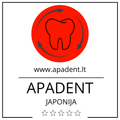INNOVATIVE TECHNOLOGIES

SANGI first encountered hydroxyapatite when it acquired a patent from the US National Aeronautics and Space Administration (NASA) in the 1970s. NASA was looking for ways to compensate for the loss of minerals in astronauts’ teeth and bones during weightlessness. It was proposed to use a precursor material – brushite – to create a new hydroxyapatite (tooth mineral). SANGI went a step further and proposed to deliver hydroxyapatite itself directly in toothpaste to restore tooth mineral with daily use.
Hydroxyapatite was difficult to obtain, so SANGI hired its first young scientists and began synthesizing this unique material. Researchers from Tokyo Medical and Dental University, Hokkaido University, and Gifu (now Asahi) University conducted in vitro remineralization and early plaque control studies, and a toothpaste manufacturer (still collaborating with SANGI – Nippon Zettoc Co., Ltd. ) took the difficult but successful step of incorporating the material into their toothpaste. The manufacturers noticed that the SANGI ingredient behaved completely differently from other calcium phosphates used up to that point. Thus was born the world’s first toothpaste with hydroxyapatite – APADENT , introduced in 1980, and in 1985 a second brand – APAGARD .
SANGI toothpastes were expensive, so their sales remained low until 1993, when, based on ongoing in vitro research and years of trials in Japanese elementary schools, the SANGI ingredient was officially recognized as an anti-caries agent and was given the name "Medical Hydroxyapatite" ("Medical Hydroxyapatite") in Japan. The government recognition had a significant impact, with over 150 million 120g equivalent tubes shipped by 2020. Following SANGI's lead, hydroxyapatite toothpastes were introduced in South Korea in the 1990s, with the first examples in Europe - Henkel KGaA 's Theramed Sensitiv , Vademecum Sensibilité and Coswell SpA's Biorepair - appearing around 2005. Today, there are over 200 brands of oral care products that use hydroxyapatite in one form or another (including micronized or abrasive forms) in over 70 countries around the world.






